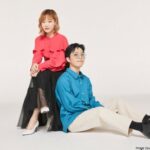Learning Korean possessive pronouns and particle is one of essential part of basic grammar. It’s relatively easy to understand. However, you should know Korean pronouns first before you learn the possessive form. Basically, Korean pronouns consist of 3 categories and each has singular and plural form: first person, second person, and third person. First-person pronouns consist of 저 (jeo) for “I” in formal form, 나 (na) for “I” in casual form, while 저희 (jeohui) or 우리 (uri) is for “we”. Second-person pronouns consist of 너 (neo), 그대 (geudae), and 당신 (dangsin) for “you” in singular form. Meanwhile, 너희 (neohui), 너희들 (neohuideul), 그대들 (geudaedeul), and 당신들 (dangsindeul) are plural form of “you”. Third-person pronouns consist of 그 (geu) for “he” in singular, 그녀(geunyeo) for “she” in singular, 그들 (geudeul) for “they” in plural (male), and 그녀들 (geunyeodeul) for “they” in plural (female).
1. Korean Possessive Pronouns Basic Rules

In order to form Korean possessive pronouns, you only need to add particle 의 (e) after noun. Its formula is like putting ‘s after noun in English. However, this rule is exceptional for particular pronouns such as 얘 (yae), 걔 (gyae), 쟤 (jyae), 우리 (uri), and 저희 (jeohui). You don’t need to add particle 의 to those pronouns. Particle 의 can be attached to the end of nouns, pronouns, names, and titles. Let’s see the examples below:
그사람의 가방 (Geusaramui gabang) = that person’s bag
서준의 오토바이 (Seojune otobai) = Seojun’s motorbike
선생님의 책 (Seonsaengnime chek) = teacher’s book
2. Korean Possessive Pronouns for First Person (My)

Credit: tvN drama
There are two types of first-person pronouns based on honorific level. 나 (Na) is casual term of “I” while 저 (jeo) is the formal one. To form a possessive, we should add particle 의. However, since it meets with pronoun that ends with vowel, it makes the different sound and pattern. Meanwhile, it is not necessary to add particle 의 for plural form like 우리 (uri) and 저희 (jeohui). 우리 (Uri) means “our” in casual way and 저희 (jeohe) also means “our” but in formal way.
나+의 = 나의 -> 내 (Nae)
저 + 의 = 저의 -> 제 (Je)
우리 + 의 = 우리의/ 우리 (Urie/ uri)
저희 + 의 = 저희의/ 저희 (Jeohuie/ jeohui)
3. Korean Possessive Pronouns for Second Person (Your)

Similar to first-person pronouns, second-person pronouns has two types based on honorific level. 너 (Neo) and 당신 (dangsin) are casual terms of “you” in singular form. For the formal or polite way, you should address directly with names or titles. Meanwhile, it basically adds suffix -들 after pronoun/ noun to create plural form. You can say 너희 (neohui), 너희들 (neohuideul), and 당신들 (dangsindeul).
너 + 의 = 너의 -> 네 (Ni)
당신 + 의 = 당신의 (Dangsine)
너희 + 의 = 너희의 (Neohuie)
너희들 + 의 = 너희들의 (Neohuideure)
당신들 + 의 = 당신들의 (Dangsindeure)
4. Korean Possessive Pronouns for Third Person (His/ Her/ Their)
Basically, third-person pronoun does not only refer to his, her, or their but also any nouns. It can be name and title. You may also address them with that person’s, those people’s, and so on. However, let’s out the examples with the common ones like 그의 (geue) for “his” and 그녀의(geunyeoe) for “her” in singular. Both are commonly used in written. Alternatively, you may address with 그사람의 (geusarame) that means that person’s. However, it is commonly used in casual way. For formal or polite way, you should address with 그분의 geubune).
그 + 의 = 그의 (Geue)
그녀 + 의 = 그녀의 (Geunyeoe)
그들 (Plural) + 의 = 그들의 (Geudeure)
그녀들 (Plural) + 의 = 그녀들의 (Geunyeodeure)
그사람 + 의 = 그사람의 (Geusarame)
그분 + 의 = 그분의 (Geubune)












